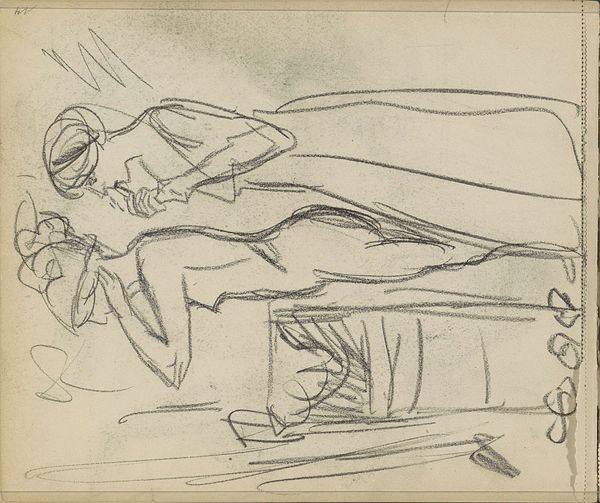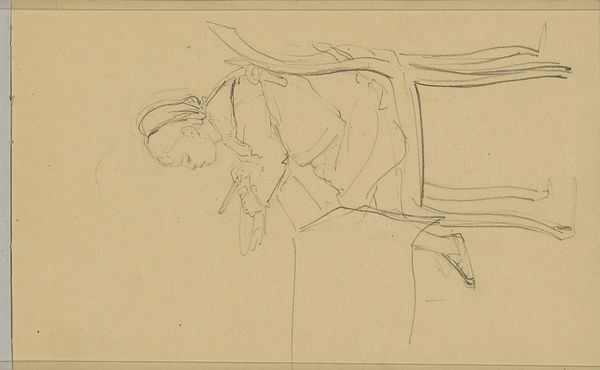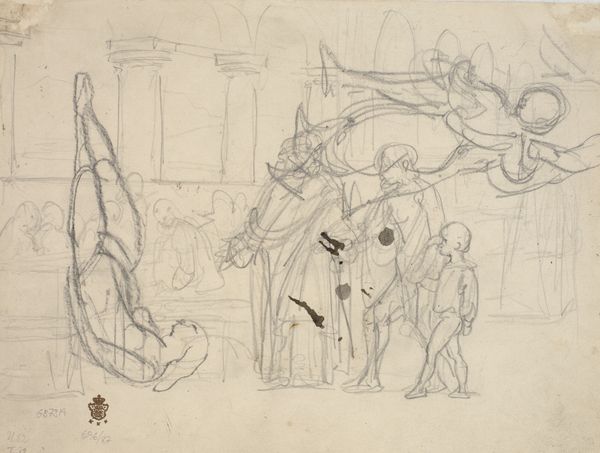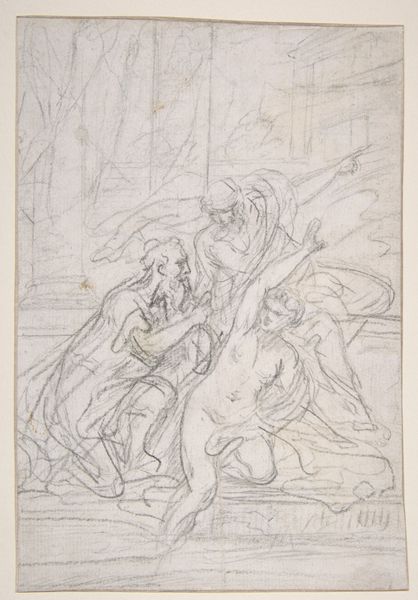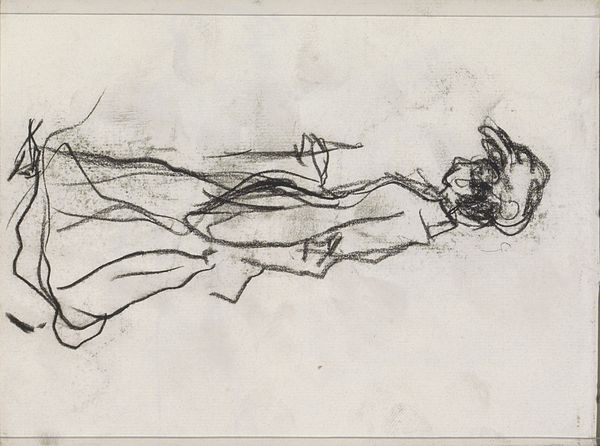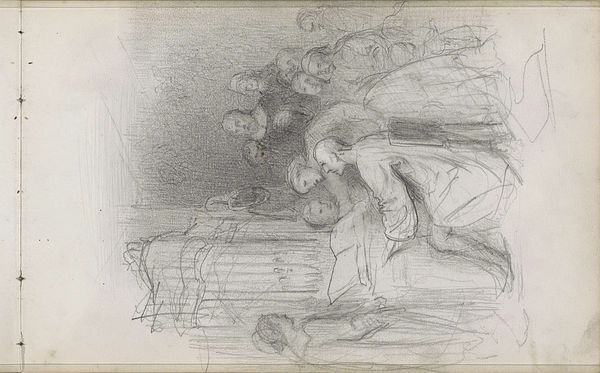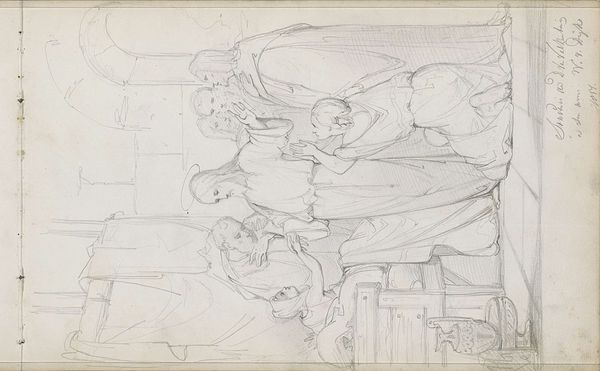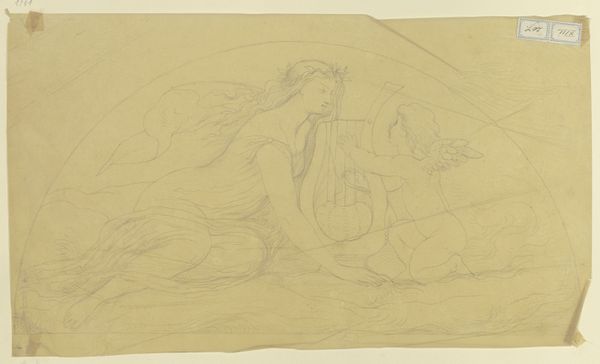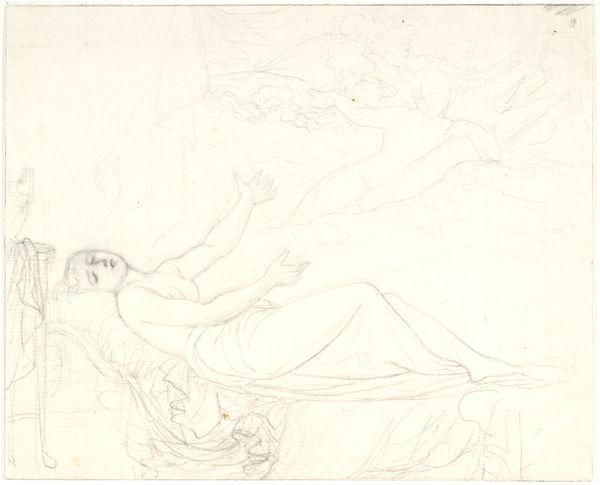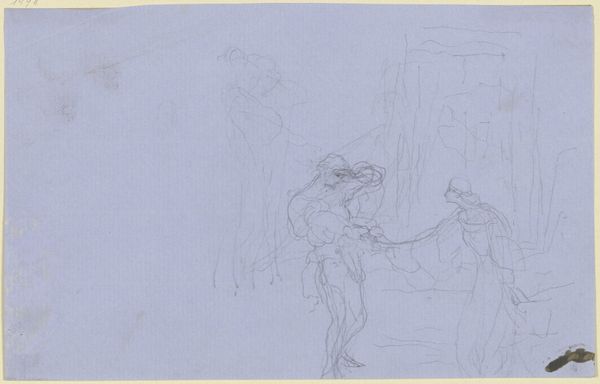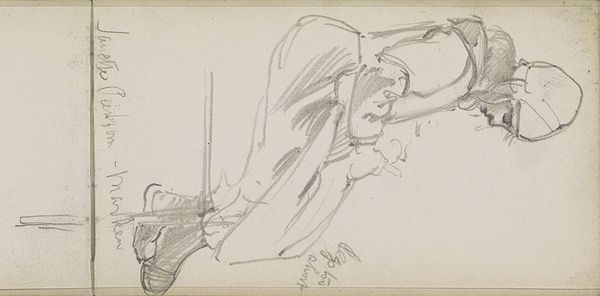
Elgiva seized byorder of Odo, Archbishop of Canterbury 1842
0:00
0:00
drawing
#
drawing
#
figuration
#
romanticism
#
line
#
history-painting
#
pre-raphaelites
#
academic-art
Dimensions: 30.2 x 20.5 cm
Copyright: Public domain
Curator: Looking at this piece, I’m immediately struck by the raw emotion emanating from what is essentially just a preliminary sketch. Editor: Indeed. This is "Elgiva seized by order of Odo, Archbishop of Canterbury" by Sir John Everett Millais, created around 1842. Housed at the Birmingham Museum and Art Gallery, it depicts a violent moment from English history. It’s executed as a drawing, mainly with line work, leaning toward the romantic and academic art styles with strong ties to the Pre-Raphaelite movement. Curator: My eye is drawn to the textures, or the potential textures, suggested by Millais’s linework. The rough cloth of the captors’ garments contrasts with what one imagines is the finer fabric clinging to Elgiva. I’m curious about his choice to leave this piece so visibly ‘unfinished.’ Is it commentary on the brutality and suddenness of the event itself? Editor: The seizing of Elgiva has been portrayed with powerful symbolic cues. The women on the left, draped in white, evoke classical mourning figures. The violent men, one with a scepter, drag Elgiva away. Her downward gaze contrasts with the upwards pleading gazes of the women at left. It suggests not only the immediate brutality, but the longer lasting impact on England. The event clearly struck a nerve with Millais, so perhaps he did not need it rendered any more thoroughly to communicate. Curator: I agree. I wonder about the specific materials used here, the paper and ink. What kind of physical and chemical changes has this work undergone since its creation? And what labor practices went into it in 1842? The art market conditions too probably impacted Millais, the Pre-Raphaelites being radically focused on materials and artistic manufacturing. Editor: Fascinating points! You are making me reflect on the visual impact. Beyond the linear brutality of the figures grabbing at Elgiva, the architectural lines in the background feel important too; they represent order versus chaos. That barred window and staircase behind suggests to me imprisonment and lack of access to freedom. Millais, whether consciously or not, has laden the composition with cues of England's relationship with its rulers. Curator: That interpretation certainly adds another layer of richness to the work. It is so impressive when just a sketch communicates so deeply. Editor: Absolutely, a powerful reminder of the emotional potential residing within a seemingly simple medium and an era where artistic skill combined historical storytelling, no matter the stage of creation.
Comments
No comments
Be the first to comment and join the conversation on the ultimate creative platform.
